December 4, 2022: Gunn Theater at The Legion of Honor, San Francisco – Pianist Anton Nel and Cellist Peter Wyrick performed works by Beethoven, Debussy, and Shostakovich. They proved that sometimes a whole orchestra would be too much. Playing selections written for their two instruments demonstrated that this music can reach 21st century hearts and minds from their origins in past centuries. That’s what “a classic” does. Handel and Hayden, Scott Joplin and George Gershwin, their creations can go on and on.
Beethoven’s Sonata No. 3 in A Major for Piano and Cello, Op. 69 is important in musical history because it is the first known piano-cello sonata in which the instruments are truly equal partners. Written in 1807- 1808, it is the third of a set of five sonatas for this pairing. Beethoven was never shy about making bold changes in the accepted way of things. This sonata was first performed in 1809. It has qualities of “bravura” as well as gentle, pleasant musical expression. Its Adagio is “Cantabile,” a singing Adagio, not a sad adagio. This sonata is said to be the most popular of the five. It fascinates the listener and also is pleasing and lovely. It reflects Beethoven’s mastery of musical imagination and his endless innovation. He wrote it at a time when he had to end his career as a pianist due to his growing deafness. This “middle period,” despite the loss of hearing, produced many creations including great symphonies: #5 and #6.
Mr. Nel was the winner of the 1987 Naumburg International Piano Competition. He tours the world as a recitalist and performs with the great orchestras of the US -Cleveland, Chicago, Dallas, and Seattle Symphonies- as well as international venues like the Wigmore Hall, England; Concertgebouw, Netherlands; and in Japan, China, Korea. He holds an endowed chair at the University of Texas, Austin. He was born in South Africa and made his debut at age 12.
Mr. Wyrick has been the Associate Principal Cello of the San Francisco Symphony since 1999. Before joining SFS, he was principal cello of the Mostly Mozart Orchestra and associate principal cello of the New York Opera. He has performed chamber music with Yo-Yo Ma, Joshua Bell, Jean-Yves Thibaudet, Yefim Bronfman among other leading musicians. He began his musical studies at Juilliard at age 8 and made his solo debut at age 12.
Mr. Nel performed the Preludes from Book 2 by Claude Debussy. These pieces are for solo piano. Each prelude has a distinct characteristic. General Lavine…eccentric; La terasse des audiences du claire du lune; and Feux d’artifice. Debussy was suffering from cancer as he wrote these, and yet his clear vision and unique musical expression is so true one feels that it is possible to see the music as well as hear it. The selections are amusing, satiric, surprising. Feux d’artifice means “fire works.” It can also mean bright wit, and in these pieces the fine wit shines.
Mr. Nel has tremendous energy as well as his talents. He followed Debussy with Chopin, Ballade No. 3 in A-flat Major, Op. 47. Chopin was a pianist of astounding ability all of which he put into his piano works. Chopin would have been delighted by Mr. Nel’s presentation. I have heard that this Ballade grew from a fairy tale poem by Adam Mickiewicz. A water nymph loves a man, but she worries that he is not faithful. She decides to disguise herself, tempt her lover, and learn if he loves only her. In the poem, the nymph drowns the man, but Chopin did not like that ending; he lets both live and be happy together. it must be the only Romantic era fairy tale with such a happy ending. The piece seems to have two endings, one very long, and the next one is brief and brisk. This Ballade has everything this writer loves about Chopin. The music dances, waltzes, shines with deep colors of glowing gems; it is grounded in reality but takes the listener to another reality.
Mr Wyrick rejoined Mr. Nel for Shostakovich’s Sonata for Cello and Piano in D Minor, Op.40. Their performance was a triumph for them and for Shostakovich. He composed the Sonata, in 1934. This was a dangerous time for him. Stalin had criticized him as “bourgeois.” The murderous dictator had walked out on Shostakovich’s opera, Lady Macbeth of the Mtsensk District. it was the opportunity to denounce Shostakovich and his music. Much of his work was withdrawn from publication or performance. The government banned the opera from production in the USSR until 1961. This Sonata in four movements is powerful in its expression of cynicism and despair. Shostakovich musically mocks the establishment standards. The cello opens the event, for it is an event. The Scherzo offers the cello harsh sawing sounds. Hope and passion appear, then bottomless silence. The composer gives us a haunted, mysterious sound and also – for a very short time – folk tunes. The Sonata ends abruptly. Where are we? What happened? Shostakovich lived with the constant uncertainty and threats around him and after him.
This was a great performance by two of the most outstanding artists of their instruments.
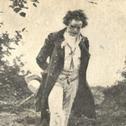
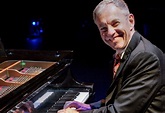
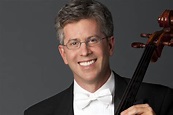 Peter Wyrick, ‘cellist
Peter Wyrick, ‘cellist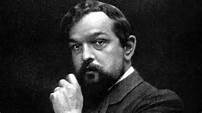 Claude Debussy
Claude Debussy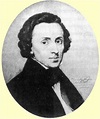
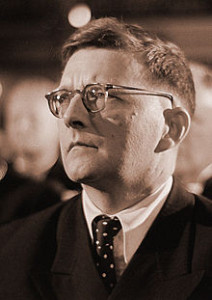 Dmitri Shostakovich
Dmitri Shostakovich